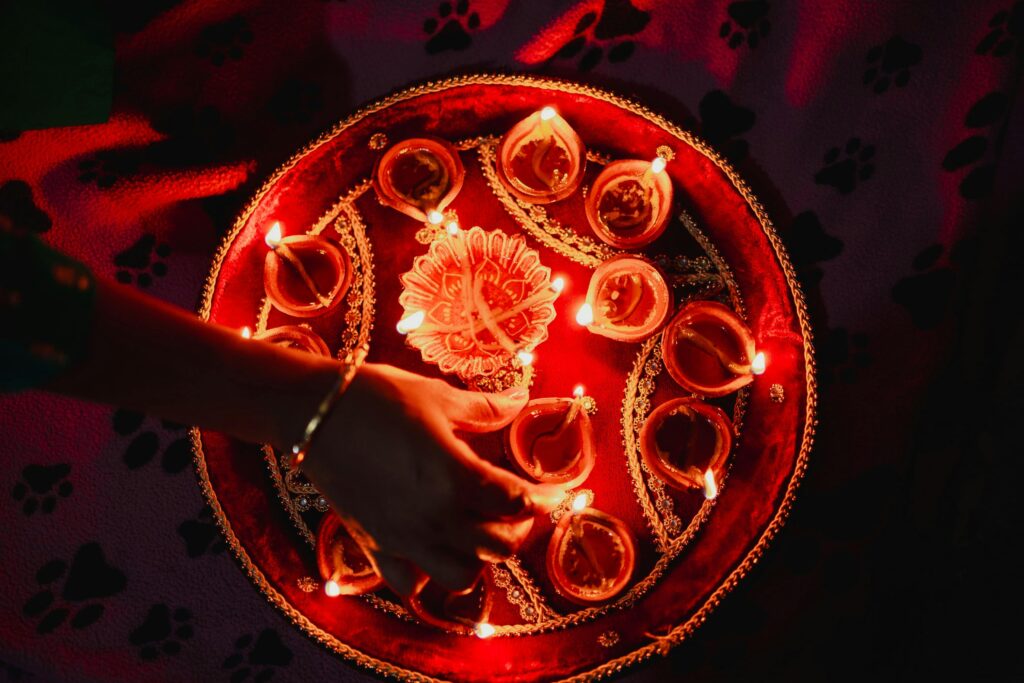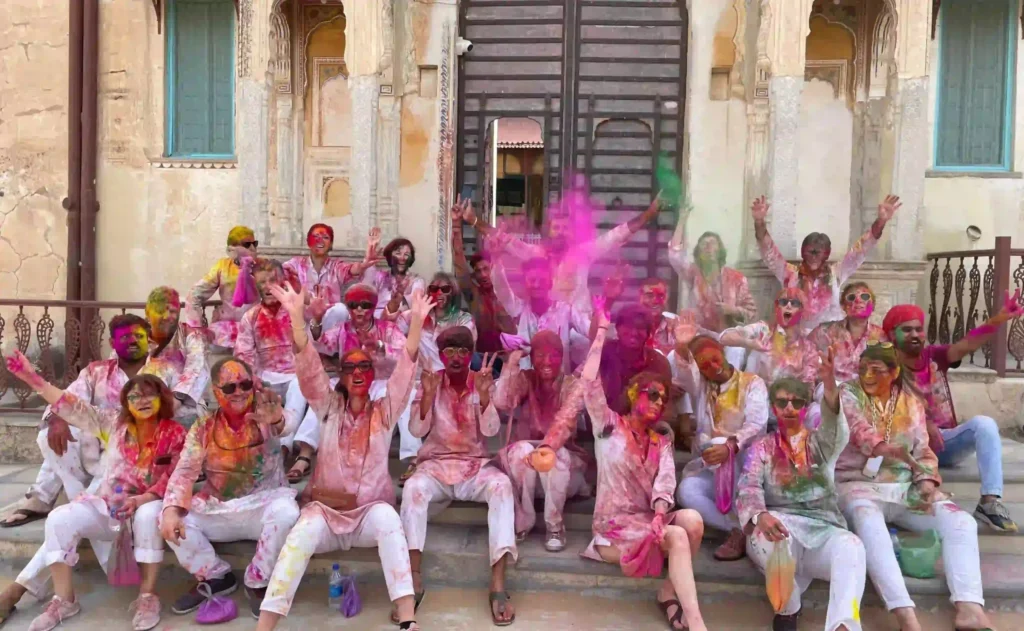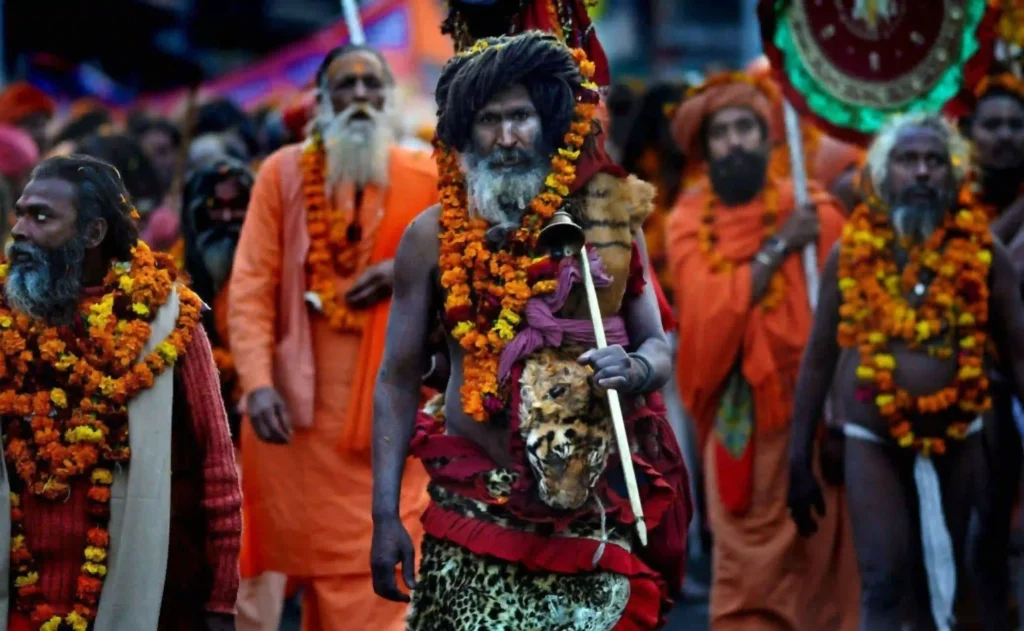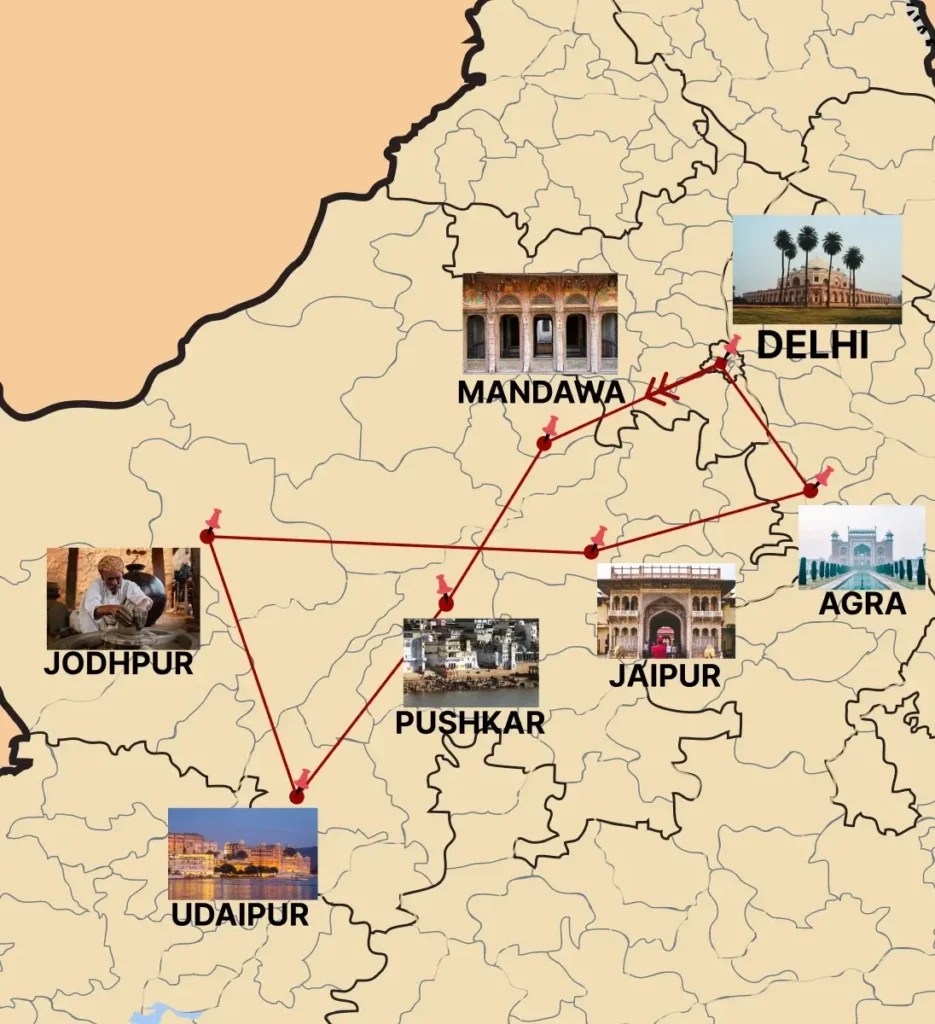About | Inclusions | Excluded Services | Pricing | What makes this trip Special? | Itinerary | Map | FAQ
Designed For
Spiritual, Cultural & Artistic Interests
Corporate Travel
Friends & Family Travel
Solo Travel
Where the Desert Comes Alive with Camels, Culture, and Camaraderie
Pushkar during the camel fair feels like another world. For five days, the quiet desert town fills up with camels, traders, travellers, and locals — all coming together for something special.
It’s not just about buying and selling camels (though there are thousands of them). There’s music in the air, dancers in bright clothes, people laughing, telling stories, and even weird competitions — like who has the best moustache.
Some people come to trade. Others just come to watch. But everyone leaves with something — a photo, a story, or just the feeling of being part of something truly Rajasthani.
Inclusions
15 nights, chosen hotels
Local driver, guide
Daily breakfast
All costs covered
In Car Wi-fi
Cooking classes, dinner
Airport transfer
Delhi rickshaw
- Flights: International or Domestic
- Drinks: Unless specified.
- Visa: Obtain your Indian visa independently.
- Meals: Not specified.
- Tips: Housekeeping, bellboys, at your discretion.
- Insurance: Comprehensive travel insurance required.
- Expenses: Laundry, telephone bills.
- Entrance: Monument fees.
- Camera: Video camera fees.
- Health: Medical, baggage insurance.
- Taxes: Airport departure taxes.
- Others: Unspecified services.
- Safaris: Game safaris not included, unless specified.
What makes this trip Special?
The Spirit of Pushkar
Witness Rajasthan’s most vibrant desert gathering — with camels, colors, and cultural traditions.
A Carnival in the Dunes
Shop handmade crafts, enjoy local music, and see traditions unfold in the desert town.
A Rajasthani Desert Spectacle
Colorful turbans, dancing gypsies, and thousands of camels — Pushkar is pure magic.
Camel Riding & Bonfire at the desert
Ride through the Thar as the sun sets, then enjoy folk music, dancing, and a starlit bonfire in the dunes of Jaisalmer.
Lakeside romance of Udaipur
Enjoy a peaceful boat ride on Lake Pichola with stunning views of palaces and cityscapes.
Colours of the Blue City
Wander through Jodhpur’s old town, past blue-washed homes, spice markets, and the towering Mehrangarh Fort above.
Pink City's Royalty
Admire Hawa Mahal’s unique windows, built to let in cool air and city views for the royal women.
Timeless Beauty of the Taj
Visit the Taj Mahal — a white marble wonder and symbol of eternal love, glowing at sunrise.
Detailed Itinerary
You land in Delhi. We’ll be there waiting, sign in hand. No stress.
Once you’re at the hotel, you can chill for a bit or start exploring right away — totally your call.
If you’re up for it, we’ll take you around. Big sights like India Gate, Parliament, and the President’s place. Qutub Minar’s pretty massive in real life. We’ll stop by Gandhi’s memorial too.
Old Delhi? It’s chaotic but amazing — rickshaws, markets, street snacks, all packed into tiny lanes. Chandni Chowk is a trip on its own.
If you like spiritual spots, we’ll take you to the Gurudwara — peaceful vibes, plus the community kitchen is something to see. There’s also Humayun’s Tomb, Lotus Temple, and a Sufi shrine with live music if we time it right.
No rigid plans. We move at your pace and with your interests.
Next, we drive to Mandawa — about 5.5 hours.
Mandawa’s got this old-world charm. Small town, not fancy, but full of stories. You walk around and it’s like an open-air museum — walls covered in old paintings, havelis from the Silk Route days just sitting there like no big deal.
We’ll take a heritage walk and stop by a few of those old mansions. Some are crumbling, while others still stand. All of them have a vibe.
Next, we head to Pushkar—around 4 hours by road.
Pushkar’s different. Quieter, more spiritual. One of those places that feels old — like really old. Pilgrims come here all the time.
We’ll visit the Brahma Temple — it’s the only one in the world. There’s also this peaceful lake in the middle of town, lots of legends around it.
The market’s small but fun. You’ll find random gems — spices, bangles, clothes you didn’t know you needed. It’s an easy place just to wander.
Next stop: Udaipur. It’s a bit of a longer drive — around 5 hours.
Udaipur is the postcard city. Lakes everywhere, palaces, hills in the background. It’s peaceful but also kind of magical.
We’ll visit the City Palace — it’s huge and filled with little stories. Also, Jagdish Temple, the Princess Garden, and Shilp Gram, if you’re into crafts.
One of the highlights? Boat ride on Lake Pichola. The views are unreal, especially around sunset. You’ll see Jag Mandir — that little island palace floating in the lake.
After Udaipur, we drive to Jodhpur—about 4 hours.
You’ll know you’ve reached Jodhpur when the houses turn blue — it’s not a filter, that’s just how it is here. They call it the Blue City for a reason.
The fort? Massive. Just sitting up there on the hill, watching over everything. We’ll wander the narrow streets near the Clock Tower too — old buildings, busy markets, the smell of spices everywhere.
If there’s time (and you’re up for it), we can check out the Bishnoi Village or swing by Umaid Bhawan Palace, Jaswant Thada, or even the gardens at Mandore.
Next, we hit the road to Jaipur — about 6 hours.
Jaipur’s all pink sandstone and old-world charm. The vibe here is a mix of royal and chaotic, in a way that’s good.
We’ll visit the City Palace, Hawa Mahal (that honeycomb-looking building you’ve probably seen in photos), and Jantar Mantar — the observatory with giant stone instruments that somehow still work.
Amber Fort is a must. It’s enormous and has that kind of faded glory that makes you imagine what it was like centuries ago.
Markets? Oh yes. Johri Bazaar and Choti Chaupar are packed with jewellery, clothes, and random treasures. In the evening, the walled city lights up — perfect for just walking and soaking it all in.
Next, we head to Agra — around 4.5 hours away.
Agra is all about the Taj. You’ve seen the photos — now you’ll see it in real life, and it hits different.
We’ll try to catch a sunset view from across the Yamuna River. It’s peaceful and less crowded. If you’re up for an early morning, sunrise at the Taj is worth waking up for.
Got extra time? The Agra Fort is close by and packed with history.
Quick note: the Taj Mahal is closed on Fridays, so we’ll plan around that.
Once you’re done soaking it all in, we’ll drive you back to Delhi — about 4 hours.
Last full day. If you just want to relax at the hotel, that’s totally fine.
Or, if you feel like heading out again, there’s plenty to explore — local markets like Chandni Chowk, the spice bazaar, Kinari Bazaar (great for wedding stuff), or the old textile area. If you’re into temples, there’s a whole stretch with mosques, gurudwaras, Jain temples, and shrines all side-by-side.
We’ll go at your pace. No rush.
Time to head home. Your driver will be ready and ensure you arrive at the airport with time to spare.
We hope you’re heading back with stories, photos, and a bit of India still buzzing in your heart.
Plan Freely with All-Inclusive Pricing
Keep Exploring
Go beyond Pushkar Camel Carnival with more cultural and offbeat tours.

Diwali Festival Tour
Days : 20
Step into the warmth of India’s Festival of Lights — come celebrate Diwali the local way.

Holi Festival Tour
Days : 16
Celebrate Holi with locals through colours, music, and tradition.

Sacred Path: Kumbh Mela
Days : 11
Take part in Kumbh Mela’s sacred rituals, holy dips, and ancient traditions.
Frequently Asked Questions
India offers a diverse range of unique activities, experiences, and attractions, making it an ideal destination for family travel. The country’s warm hospitality and rich cultural traditions create an enriching environment for young travelers, and children are warmly welcomed everywhere they go. Whether you’re seeking natural beauty, historical sites, bustling cities, or vibrant festivals like Holi or the Pushkar Fair, India has it all. Sanitation, and hygiene (WASH) programming to protect everyone’s long-term health.
When it comes to personal safety and the well-being of your travel group, India is generally considered a safe destination. English is widely spoken and easily accessible, making navigation straightforward. However, it’s advisable to take common-sense safety precautions, as you would when traveling anywhere in the world. Having a local tour guide can be invaluable for identifying safe areas to explore and recommending hygienic dining options. It’s essential for international tourists to avoid drinking tap water and opt for bottled water during their stay.
India offers a wide range of accommodations to suit various budgets and preferences. From opulent palace hotels to Western-style chain hotels and budget-friendly hostels, you’ll find numerous options. Note that overnight stays are typically not permitted in wildlife sanctuaries and national parks, but you can easily find private accommodations on the outskirts of these areas. Hotel rates vary depending on the season and location. At IHT, we select accommodations that are not only comfortable but also maintain high hygiene standards. We provide boutique experiences for international guests and luxury hotels to ensure your stay is memorable.
To confirm a booking with us, we require an advance payment, typically a percentage of the total cost, to secure your reservation. The remaining balance can be paid according to the agreed-upon payment plan for your journey. In some cases, such as during peak or holiday seasons, full payment may be required to confirm your reservation. We accept payments via Visa, MasterCard, and American Express, with a small bank processing fee for credit card payments. Alternatively, you can make a direct payment through a wire transfer to our bank account, with no additional fees. We will provide you with our billing and bank details at the time of invoicing, which you will receive after confirming your bookings.
Most international travelers need to obtain a visa before visiting India. It’s essential to contact your local Indian embassy for guidance on the visa application process. Tourist visas are typically valid for six months, and it’s necessary to have at least two blank pages in your passport when applying. India also offers e-visa options for convenience.
Before traveling to India, ensure your travel insurance covers loss of personal items, personal accidents, medical emergencies, emergency travel expenses, and trip cancellation. We require all guests traveling with Incredible Real India to have travel insurance.
We recommend discussing vaccination requirements with your healthcare provider, as we cannot provide medical advice.
In the event of a medical emergency or any unfavorable incident, our team is readily available to assist you. Your safety is our top priority, and we maintain constant communication with our vehicles on the road. Additionally, we provide contact information for private doctors and medical facilities in your journey documents, and most hotels partner with doctors for 24-hour on-call services.
Our restaurant and hotel selections can cater to specific dietary requirements.
Tipping practices vary by location. On some journeys, certain gratuities are included. Typically, it’s customary to tip the car or bus driver, driver’s assistant (if applicable), local tour guide, as well as waitstaff, hotel housekeeping, and hotel porters.
India’s climate varies from region to region. Winters are generally cool and fresh from November to March, while hot and dry temperatures, along with dust storms and coastal humidity, prevail from April to June. The best time to visit the Himalayas is during the monsoon season when the rest of the country experiences heavy rainfall.
Major international airports in India have currency exchange counters. Most hotels can also assist with currency exchange. It’s a good practice to carry sufficient local currency for basic expenses, as some wildlife resorts may not offer currency exchange facilities. There are no specific restrictions on the amount of foreign currency or traveler’s checks you can bring into India, but you’ll need to fill out a declaration form upon arrival.
While major cities accept MasterCard and Visa, Diner’s Club and American Express cards may not be as widely accepted. ATMs are readily available in major cities, but carrying some Indian currency is advisable for smaller locations and for tipping.
India has extensive telecom coverage, with mobile phones working in most areas. However, not all mobile operators have the same coverage quality. Some remote areas, such as national parks and mountainous regions, may have limited network access. Most hotels offer internet facilities, and you can find internet cafes in cities. Acquiring a local prepaid mobile number can be cost- effective, and our cars and buses provide free Wi-Fi access for your convenience.

